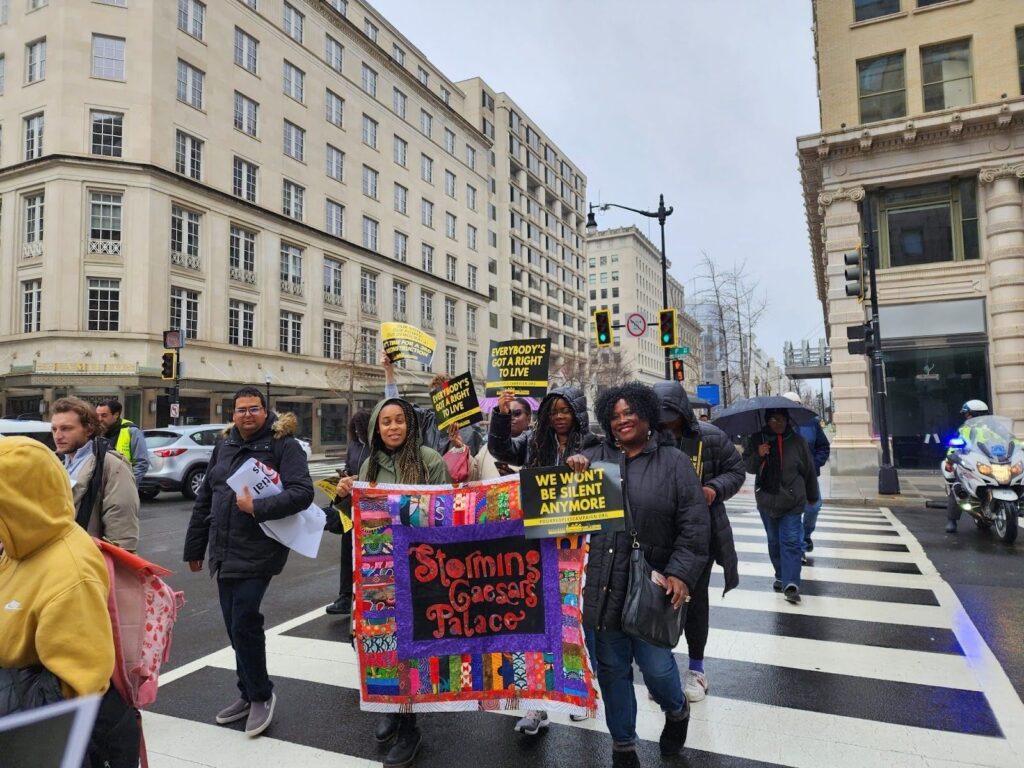“Homeless in Metropolitan Washington,” the newly released report on the region’s 12th annual homeless count, provides a look at the rising number of men, women and children living in the shelters, parks and abandoned buildings of the nation’s capital.
But the report, prepared by the Metropolitan Washington Council of Governments (COG) also provides a yearly reminder of homelessness as it endures beyond the city’s borders, in Washington’s suburbs, some of America’s richest communities.
Throughout the region, 11,830 homeless people were included in this year’s count, a slight decrease from last year. The district accounted for more than half of them: a total of 6,954, up 6 percent since last year.
Another 4,876 people were counted in the suburbs, roughly 9 percent less than in 2011. Virginia’s Fairfax County, which claims a median household income of more than $104,000, reported 1,534 homeless residents this year, a slight decrease from 2011. But Loudon County, Va., which is even wealthier, claimed 164 homeless people, up eight individuals from the previous year.
In Alexandria, Va., where the 352 homeless people counted represented a 15 percent reduction from 2011, one official suggested that efforts targeted at moving people from shelters into affordable apartments had an impact (see facing page).
Rapid rehousing initiatives, which prevent homelessness or quickly address it, were credited with helping alleviate homelessness in other jurisdictions as well. Ongoing efforts to place chronically homeless people in permanent supportive housing helped slow the growth of homelessness in the district and helped reduce numbers in the region as a whole, the report found.
Throughout the region, 8,657 formerly homeless people were counted as living in permanent supportive housing. Such programs focus on moving individuals out of emergency shelters and into stable housing where they may begin to address the problems underlying their homelessness. According to the 2012 report, the majority of the region’s homeless people suffer from traumas and crises including domestic violence, chronic health problems, physical disabilities, substance abuse and severe mental illness.
A chart indicating the steady movement of vulnerable homeless people into permanent supportive housing represents a bright spot in this year’s report, according to Michael Ferrell, chairman of COG’s Homeless Services and Planning Committee.
“This particular slide gives me the greatest hope and the greatest optimism,” Ferrell said at a recent Powerpoint presentation of this year’s findings.
In Montgomery County, Md., where 981 homeless people were counted in 2012, permanent supportive housing programs were largely responsible for the 13 percent decline in homelessness over the past year, according to the report. The number of single homeless people in Montgomery County was down significantly as a result of such programs.
Yet the Montgomery County figures also reflected another trend seen regionally and nationwide: an increase in family homelessness. Throughout the Washington region, 1,765 families were counted this year, an increase of 5.5 percent over 2011.
In Montgomery County, 69 families were in emergency shelter, up from 55 in 2011. In neighboring Frederick County, Md., which includes both suburban and large rural areas, a total of 285 homeless people were counted, up five individuals from 2011. The total included 74 children.
“The idea of homeless kids in our school system. It just troubles me terribly, and I don’t think that we are different from other jurisdictions,” Frederick County Commissioner David Gray said at the May 15 COG meeting where the full report was presented.
In all, 3,388 homeless children and youths were included in this year’s regional count, two percent more than in 2011. Many, but not all, of their parents were working. Homeless parents were far more likely to have jobs in the suburbs than in the city itself.
In the district, where new efforts are under way to move homeless parents from welfare into job training or work, only 17 percent of adults in homeless families were working, according to data collected for the 2012 count.
In sharp contrast, at least half of all homeless adults in families in most of the suburban jurisdictions were employed. In Virginia’s Loudon, Arlington and Prince William counties, more
than 60 percent of adults in homeless families had jobs. In Alexandria, 86 percent of adults in homeless families were working, according to the report. The majority reported gross monthly incomes of over $1,000 a month.
Yet such earnings are often insufficient to pay costly area rents. A lack of affordable housing continues to contribute to homelessness and slow efforts to alleviate it throughout the region, Ferrell said.
“One of the most profound observations I’ve been able to make in reviewing all the data: 85 percent of homeless families in the district are on public assistance,” Ferrell said. “But in some suburban jurisdictions, nearly that same percentage is working. They fall into the category of the working poor.”








